
Tunic is a top-down isometric action game reminiscent of the good old Zelda days. You play as a little fox and explore an island filled to the brim with secrets, treasure, and pages of the game’s manual that you can put together. You will also come across unique enemies and colossal beasts while uncovering new secret techniques and relics. The world is absolutely gorgeous with a colorful, yet simple art style that pops out and pleases the eye at every turn. Paired with a pleasing combat system and a plethora of secrets, Tunic is a game worth discovering.
Luckily for Deck users, Tunic is not an intensive game. The game’s recommended settings were actually the maxed out ones at native resolution, and after some initial testing, I can happily say it will run most of the time at 60 FPS. With temps around 65-70, depending on the area, and battery sticking average around 15W, playing like this is possible, but it can be improved. If you do decide to play at max settings, make sure the TDP is set to 8 as well to avoid it using too much power.
I decided to try to curb these FPS spikes first. Through my testing, it turns out SSAO (Screen Space Ambient Occlusion) was causing most of them. SSAO is used a lot in Tunic and really makes the world pop just a bit more, but turning it off almost instantly fixed most of the spikes. I do believe that SSAO on medium works very well while retaining the quality it gives.
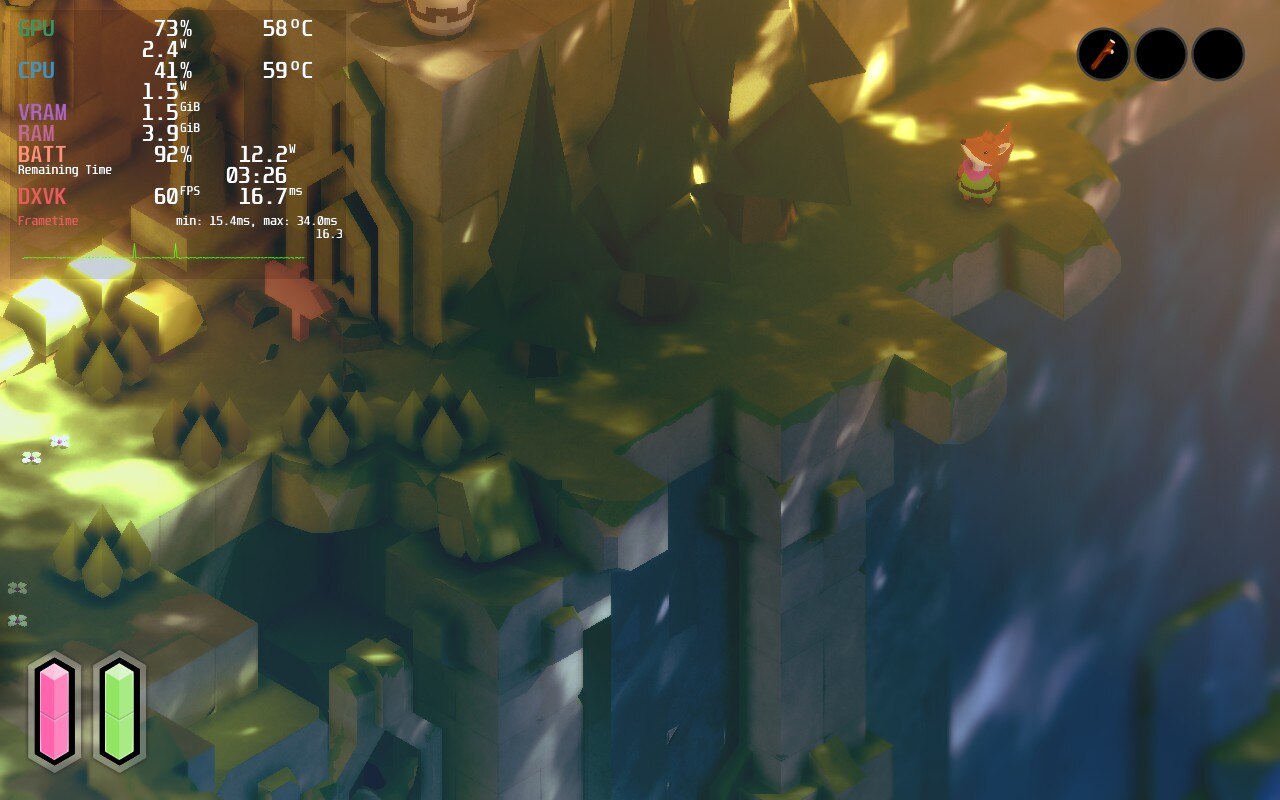
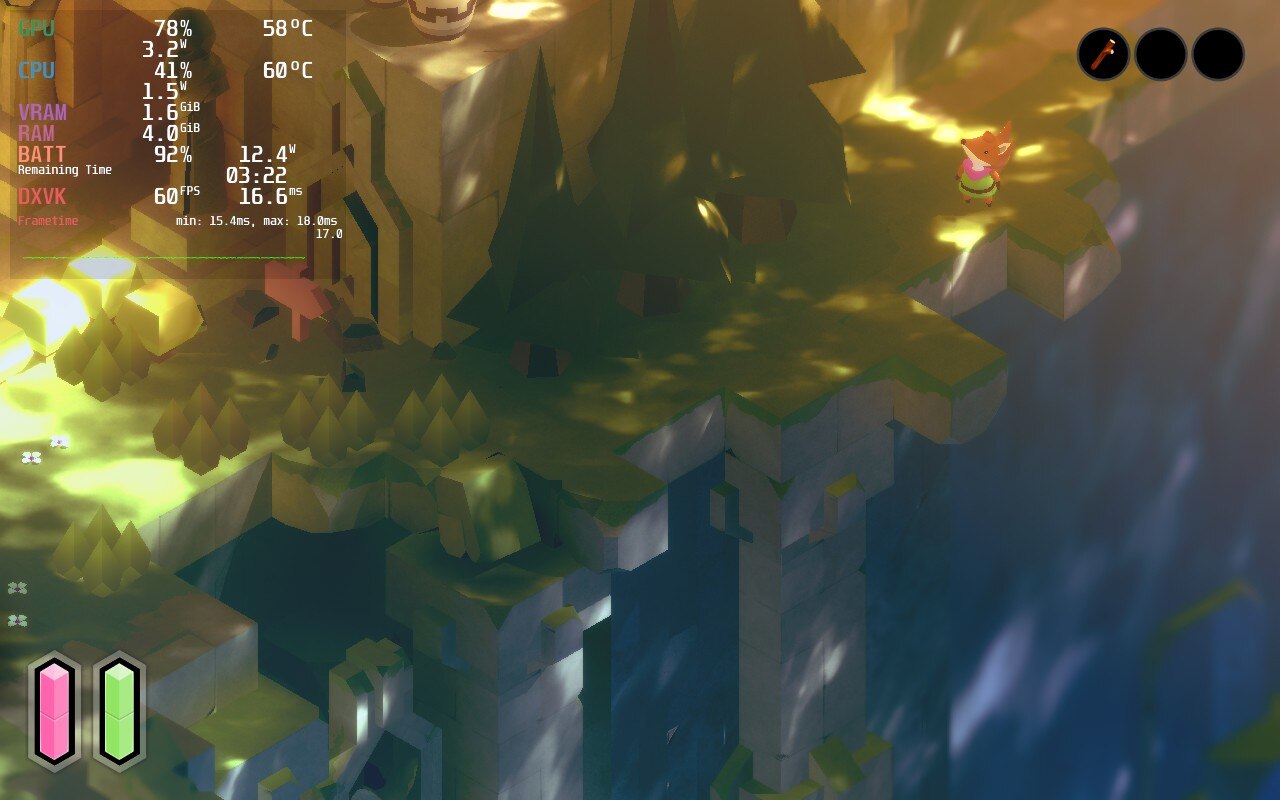
While there is a difference, it didn't affect the overall aesthetic of the game and ran much more smoothly.
I also decided to limit the TDP to make sure it didn’t try to go overboard on power consumption. I landed on using 8 as it kept the game at 60 FPS and temps down to an average of 65. Limiting the TDP did mean some of the graphically intensive areas ended up causing framerate drops to around 45-50, but I remedied that by turning shadows to low (which showed almost no visual difference to me) and brought resolution down to 1152x720. Paired with FSR upscaling and sharpness of 1, the game looked almost exactly the same as native. I did turn off FXAA as well, which made corners of all models look sharper, but I feel it makes the game stand out more with reduced graphical quality.
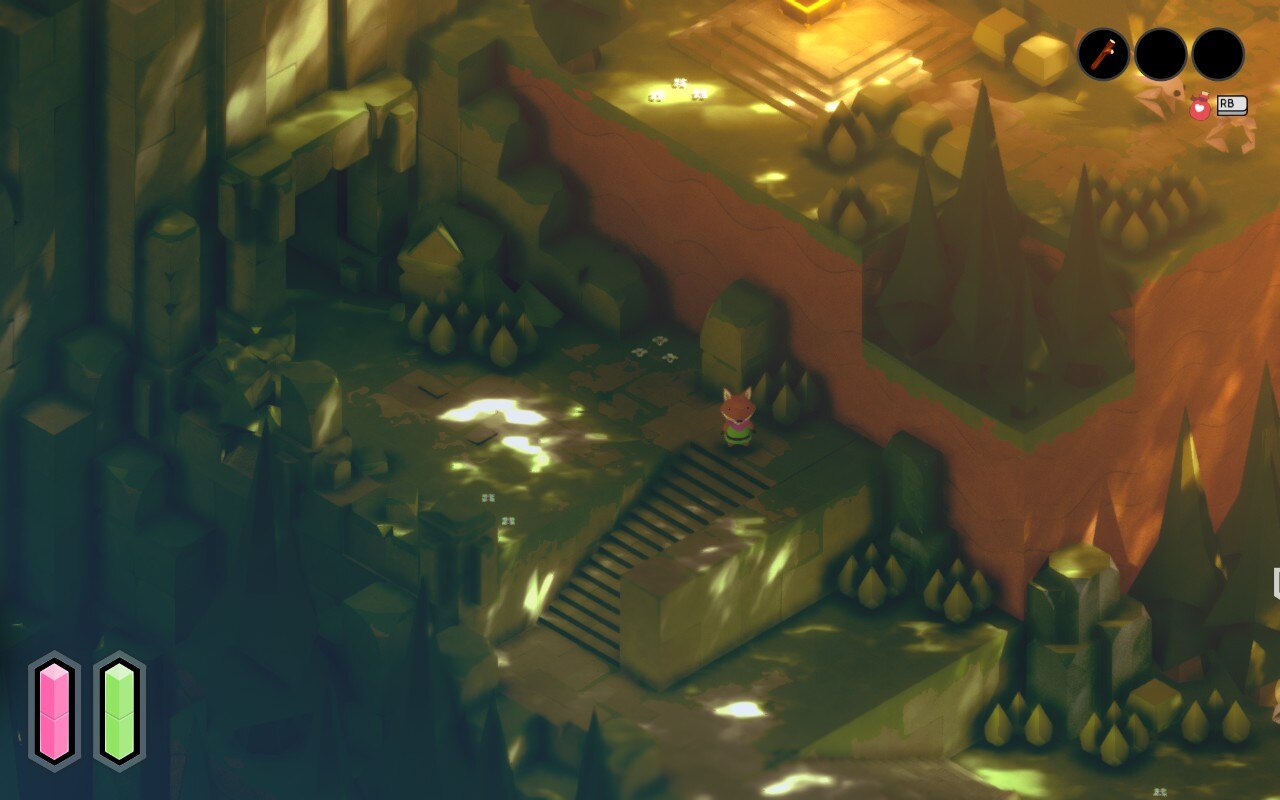
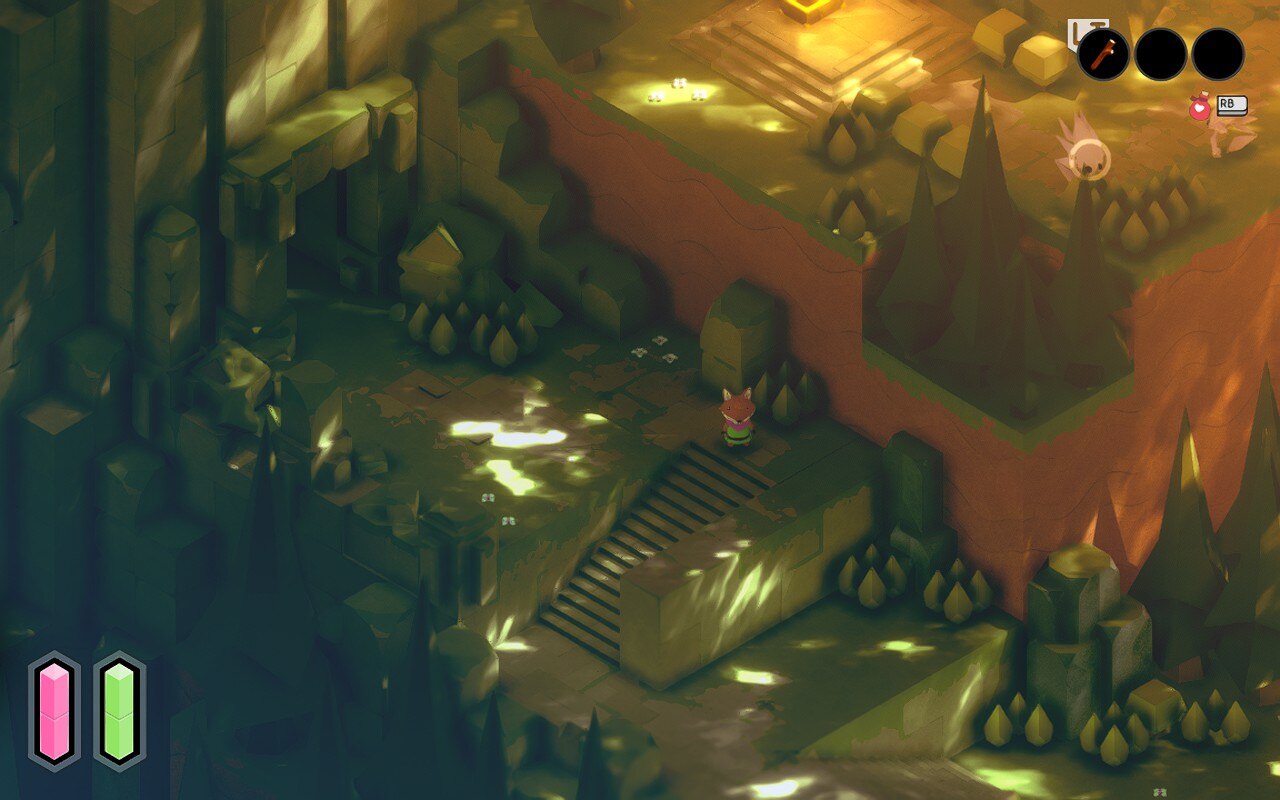
1280x800 vs 1152x720 really didn't show a significant difference to quality, but did provide a more stable 60 FPS.
It is possible to turn everything off or to low and set the resolution to 960x600 and upscale that to save as much battery as humanly possible while still looking pretty decent. While changing resolution down to 1152x720 didn’t affect the battery as much, going to 960x600 with the same settings did lower it by about 1-2W. This also creates a super stable 60 FPS with almost 0 drops at all. The game still looked quite good for the most part though, but it was obvious that there were some downgrades to it. Turning FXAA off does help tremendously with a lower resolution and FSR though.

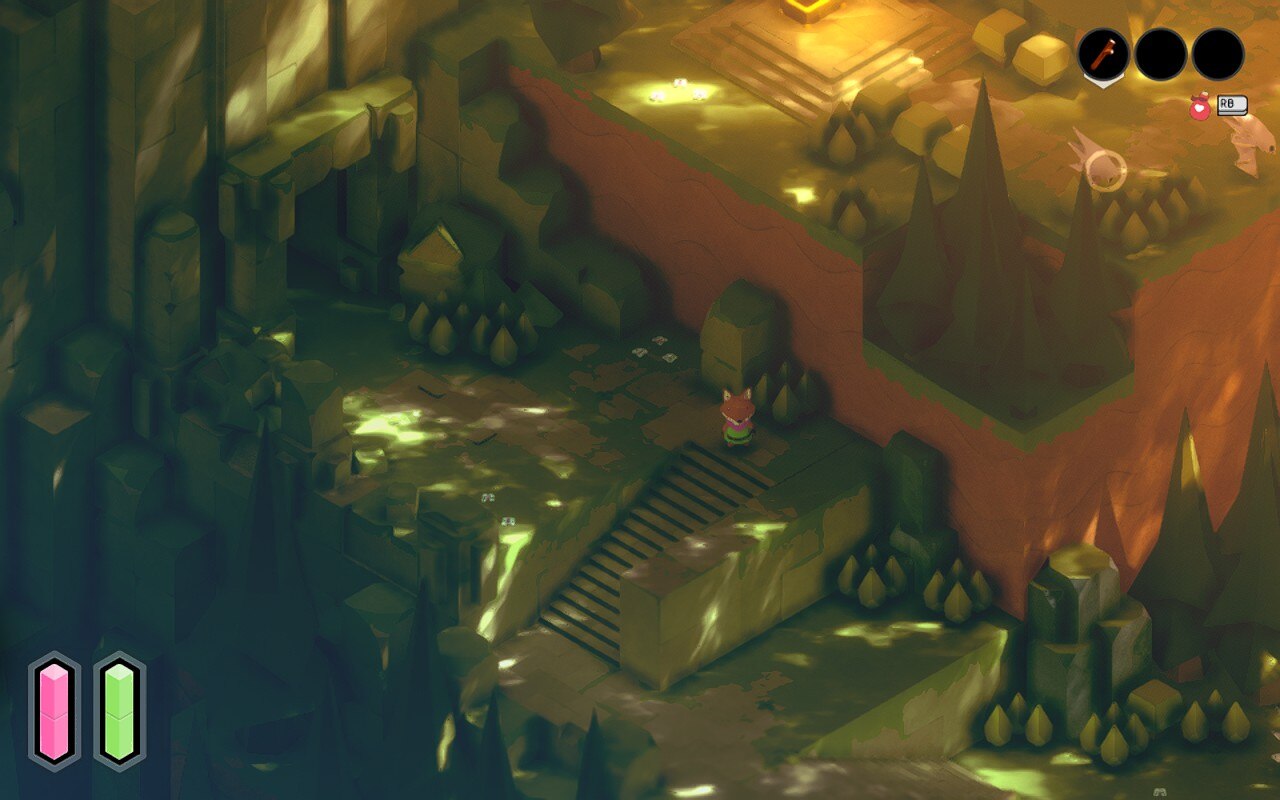
1280x800 vs 960x600 definitely showed more of a downgrade in quality, but it wasn't horrible.
Luckily, no bugs or glitches were caught and the game ran smoothly in general. Tunic is a game meant to be played at 60 FPS though, so any drops were quite noticeable. If it wasn’t, I would say the game is 100% playable from maxed settings all-around, but it did hurt my eyes a bit in the areas where there were a lot of SSAO effects on screen and the framerate dropped to 45.
All-in-all, Tunic is a really fun game to play. The gameplay and artstyle mesh together very well, while the stable performance on the Deck make this a wonderful game to take on the go. I didn’t expect it to be a powerhouse game really, but it did perform better than I expected after minimal changes to the settings. Personally, I prefer a sharper look and stable 60 FPS for a game like this, and luckily, it was able to hit that quite easily.
Our review is based on the PC version of this game.
If you enjoyed this review, be sure to check out the rest of the content on SteamDeckHQ! We have a wide variety game reviews and news that are sure to help your gaming experience. Whether you're looking for news, tips and tutorials, game settings and reviews, or just want to stay up-to-date on the latest trends, we've got your back!
Tunic is a wonderful Zelda-like journey that flawlessly performs on Deck. Fantastic setting, great gameplay, and a stable 60 FPS make this a fantastic fit to find secrets on the go.

SteamOS:
60 FPS Cap with 60 Refresh Rate
TDP Limit 6
FSR Upscaling with Sharpness 1
Proton:
Proton GE 7-24
In-Game:
Resolution: 960x600
Shadow Quality: Low
SSAO Quality: Off
Depth of Field: Off
FXAA: Off (This helps FSR tremendously)
Projections:
55c-58c for CPU and GPU Temps
10W - 11W Battery
Around 4-4.5 hours
I just received my Steam Deck and reading online I see that most people go for the sweat spot 40fps. Do you think this game maxed out with refresh rate limited to 40 fps and tdp limited to the same 8 would provide the best experience? I don't have this game yet, but I'm considering buying it after I have gone through some of my backlog. Thanks
Generally, 40 FPS is a sweet spot for a lot of games, but there are some that are tied to a higher framerate for the way the game is meant to be played. Tunic is one of the games that anything lower than 40 would stutter the game heavily.
Too bad I already played this on PC, just got my Deck and this would be the perfect game!
Absolutely ADORE the deep mystery this game provides, thanks in no small part to the incredible game manual.
Praise the Holy Cross!
PS: @BarbecuedKitty thanks for making such a sick website, already made use of your Proton GE guide 🙂 Here's to its continued success!
Hi again,
I really enjoyed reading this review and all I have to say is that I think that this is my type of game to play. I really like your descriptive details and love how you included that this game is very colorful. I can definitely see a difference when it comes to the quality. At first, I could not tell the difference but when I look very closely I can see that the other side is picture-perfect. Thank you so much for posting these amazing detailed reviews.